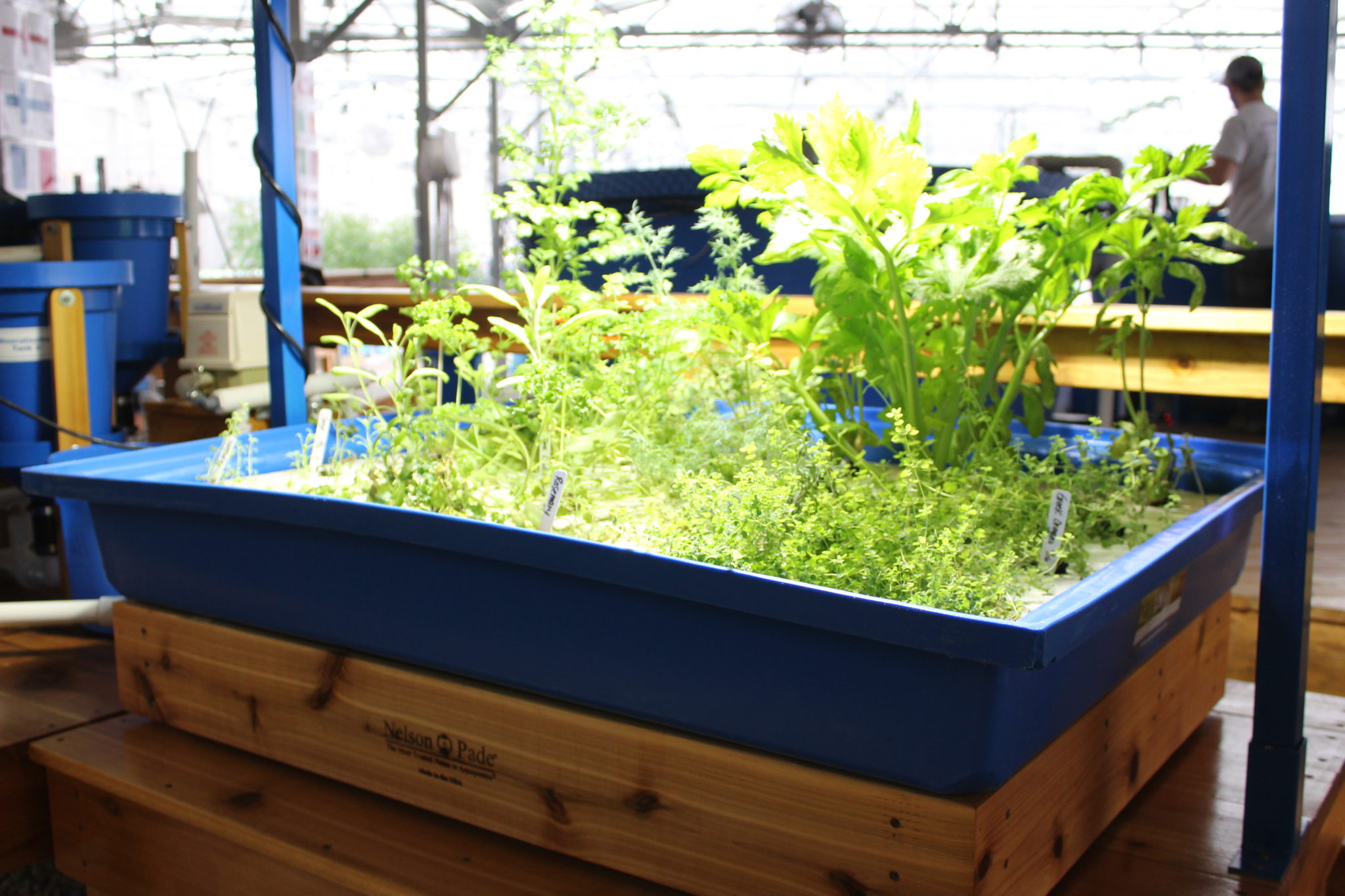Introduction to aquaponic gardening
Aquaponic gardening is a closed-loop freshwater system for soilless gardening. Here’s an introduction to how it works and how to get started.

Innovative gardening techniques have revolutionized the way we approach growing food. For instance, hydroponic gardening, or soilless gardening that suspends plants’ roots in a water and chemical nutrient mixture, is efficient and well-suited to gardeners that lack large plots of land.
For homesteaders off-put by the chemical aspect of hydroponics, there’s aquaponics, a
What is the difference between hydroponic and aquaponic systems?
The primary difference between hydroponic and aquaponic systems is that the latter uses fish to supply nutrients to the plants instead of chemicals.
“Bacteria convert fish waste to plant food. Plants suck up the nutrients thereby filtering the water for the fish,” explains Brian Filipowich, chairman of the Aquaponics Association. “The system recirculates. It tends to work like a healthy ecosystem.”
Fish in successful aquaponic systems can also be eaten. Most freshwater fish can be used in an aquaponic system. Filipowich says that the most commonly used fish in aquaponic systems are tilapia because they produce lean meat, are easy to grow and have a high tolerance for different water parameters, though some aquaponic systems use trout, perch or catfish. If you are not interested in producing edible fish, goldfish and koi are also easy to manage.
Like hydroponic systems, aquaponic systems are suited for drought-prone, mountainous and urban areas because they are water efficient and do not require working soil. But unlike aquaponic systems, the nutrients in a hydroponic system must be added manually, and they are often made from non-renewable petroleum by-products. Hydroponic systems also require waste water discharge every few months. Aquaponic systems are more self-regulating.
“Your nutrient input is just fish food, so just depending on where you’re getting your fish food, it’s more sustainable,” Filipowich says.
Aquaponic systems, however, a more complicated than hydroponics systems and require a certain level of scientific acumen. Aquaponics also generally require more space than hydroponics so that the fish can thrive.
“Aquaponics if done right is a very useful efficient way to produce food, but it does have a long, steep learning curve,” Filipowich says. “One of the main challenges is system design.”
The costs of starting an aquaponic system are also often higher than their hydroponic counterparts. “Because the industry is so new, there are not a lot of places to get the materials, so the upfront cost is going to be pretty big,” Filipowich adds.
How do I get started with aquaponics?
For first-time users, aquaponics systems are best purchased through retailers that specialize in designing and producing them. “You’re not necessarily going to find an aquaponics system at a big retailer,” says Rebecca Nelson, co-founder and president of Nelson and Pade, an aquaponics company based in Montello, Wisconsin. “The most important thing is materials they are made of. You want to make sure you want to use high quality materials.”
Nelson says that you must use food-grade plastics and National Sanitation Foundation certified pipes to avoid chemicals leaching into the water.
Because the design specifications are so particular, creating a DIY aquaponics system is challenging. “A lot of people try their own and find they don’t work well,” Nelson says.
If you are purchasing your first home system, Nelson says recommends one that is a couple hundred square feet. “Four to six hundred [square feet] would be great for a small family,” she says. “It will produce all the vegetables you need.” Your aquaponic system will need access to power for components like pumps, aerators and filters, and you may also need a heater to keep the fish at an optimal temperature.
How do you know if you are for this mental and monetary investment? “You want to study the science and understand it, so you know what to expect and how to react to different situations,” Nelson says. “If you’ve ever raised fish in an aquarium that’s a good background to have. If you’ve done some gardening that’s always good.”
Even if it is a challenge, it can be a good learning experience and a fun science experiment for the family. “It also provides a really nice environment and learning for the family as a whole because it teaches so many parts of science and business and agriculture,” Nelson says. “It’s not just a matter or producing food. It’s a great learning opportunity.”

Hi, I’m wondering what bin did you use in the pictures?